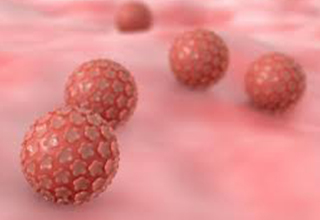Increasing Knowledge about Human Papillomavirus (HPV) and HPV Vaccination among Adolescents in Lusaka. (Primary Research) areas of Emphasis

Abstract:
It can be asserted
that knowing where adolescents gain information about human papillomavirus (HPV)
vaccines can be helpful in planning public health interventions aimed at promoting
HPV vaccination. This study assessed the following: exposure to specific sources
of information about HPV vaccines, self-reported helpfulness of these sources of
information, and whether the specific source of information was linked to knowledge
about HPV vaccine amongst adolescents. It was discovered that most of the adolescent’s
access information about HPV from sources that included Media (Internet, TV, Radio,
and Newspapers) and individual (Doctors/nurses, parents/guardians, teachers and
peers). However, sources such as TV, Doctors/nurses and Radio were rated to be ineffective
in disseminating information. It should be noted that in order to increase awareness
of HPV and the vaccine, there is need to fully understand and utilise sources that
adolescents are mostly in contact with and easily accessible. Such information sources
greatly influence the decisions and actions that adolescents take in their life
endeavours. Insufficient access to information about HPV and the vaccine will continue
to contribute to the increase in cervical cancer cases in the country. Therefore,
more effort is needed to ensure that the adolescents receive the information needed
with regards to HPV vaccination.
Keywords: human papillomavirus vaccine, adolescents, knowledge, perceptions,
information.
References:
[1].
Conroy K, Rosenthal SL, Zimet GD,
Jin Y, Bernstein DI, Kahn JA. (2009). Human papillomavirus vaccine uptake, barriers
to vaccination, and predictors of vaccination in young women. J Adolesc Health.
44:S13.
[2]. Dempsey,
A.F., Abraham, L.M., Dalton, V., & Ruffin, M. (2009). Understanding the reasons
why mothers do or do not have their adolescent daughters vaccinated against human
papillomavirus. Annals of Epidemiology, 19(8), 531-538.
[3].
Dorell, C., Yankey,
D. & Strasser, S. (2009). Parent-reported reasons for no receipt of recommended
adolescent vaccinations, national immunization survey – teen, 2009. Clinical Pediatrics,
50(12).
[4].
Herbert NL, Gargano LM, Painter JE,
et al (2013). Understanding reasons for participating in a school-based influenza
vaccination program and decision-making dynamics among adolescents and parents.
Health Educ Res. 2013; 28:663-672.
[5]. National
Cancer Institute (NCI). (2005). Theory at a glance: A guide for health promotion
practice [pdf]. Retrieved from http://www.cancer.gov/cancertopics/cancer library/theory.pdf.
[6].
Thompson GN, Estabrooks CA, Degner
LF. (2006). clarifying the concepts in knowledge transfer: a literature review.
J Adv Nurs.; 53:691-701.
[7].
Wetzel C, Tissot A, Kollar LM, Hillard
PA, Stone R, Kahn JA (2007). Development of an HPV educational protocol for adolescents.
J Pediatr Adolesc Gynecol. 20:281-287.
[8]. World Health
Organization, Key Facts, Human Papilloma (HPV) and Cervical Cancer, 15 February
2018. Retrieved from http://www.who.int/en/news-room/fact-sheets/detail/human-papillomavirus-(hpv)-and-cervical-cancer.

